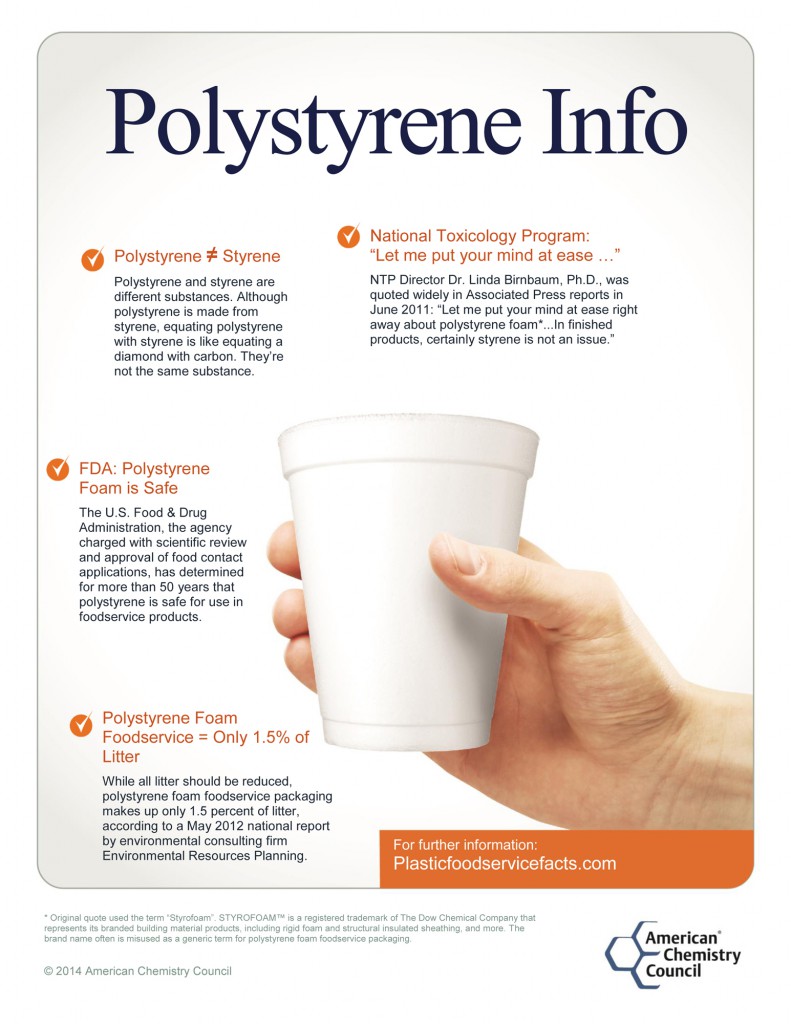The reason we trust plastic to safely package and deliver our food is simple: it works.
Every day, plastic food packaging delivers real benefits to millions of consumers throughout the world. In fact, it’s widely known that plastic packaging protects food to help keep people safe and healthy.
Plastics used in food packaging have long been valued because they are strong, inert and even water proof – critical features that enable food packaging to do its job.
Food packaging includes a wide range of products, from the cups, plates, and utensils used to serve food, to the packaging that protects food during transportation and storage.
It is unfortunate when news reports miss the mark by not telling the full story when it comes to the safety of plastics food packaging materials that we rely on. What’s often absent is an explanation of how these materials are evaluated for safety before they’re ever marketed to consumers and their contributions to food safety.
So how can consumers discern fact from fiction? Here are three T’s to remember when it comes to plastic food packaging.
Tested
Plastic food packaging is reviewed for safety by the FDA.
Consumers can and should be confident in the safety of plastic food packaging. FDA’s review of plastics for contact with food specifically considers the potential for migration (or the plastics mingling with the food) before making a safety determination.
A few stories have recently made frightening claims about certain types of plastic food packaging.
It is important to remember that the FDA strictly regulates substances that come in contact with our food, including those mentioned in recent news stories, such as polycarbonate and epoxy resins made with BPA, as well as polystyrene. The FDA has determined for decades that these substances are safe for use in food contact.
The FDA website answers the key question: “Is BPA safe?” with one word: “Yes.”
Recently, FDA released the results of a comprehensive study, one of the largest studies ever conducted on BPA. The results were published in peer-reviewed scientific literature. The lead FDA researcher says the results of this recent study “both support and extend the conclusion from the U.S. Food and Drug Administration that BPA is safe as currently use” in plastic food packaging.
The FDA has also determined for decades that polystyrene is safe for use in contact with food – and other regulatory bodies agree that there is no cause for safety concerns from polystyrene used in food packaging and foodservice containers. Dr. Linda Birnbaum, Ph.D., NTP director, was quoted widely in Associated Press reports in June 2011:
Let me put your mind at ease right away about polystyrene foam … [the levels of styrene from polystyrene containers] are hundreds if not thousands of times lower than have occurred in the occupational setting… In finished products, certainly styrene is not an issue.
Test data in 2013 indicated that the migration of styrene from polystyrene foodservice products is significantly below the safety limits set by FDA itself – 10,000 times less than FDA’s acceptable daily intake. Other regulatory agencies have reached similar conclusions.
Tried
Consumers have counted on affordable and effective plastic food packaging for decades.
And today’s efficient modern plastic packaging continues to keep foods fresher longer with less material, less waste and increasing opportunities to recycle.
Plastic foam foodservice packaging helps keep our food fresh, hot or cold and ready to eat. Foam plastic insulates extremely well to maintain food temperature, so we can enjoy food the way it’s meant to taste – and keeps our fingers from burning if the food or beverage is hot. Polystyrene foodservice also provides important sanitation benefits in schools, cafeterias, nursing homes and hospitals – places where we want to keep bacteria and germs to a minimum.
Trusted
Who wouldn’t prefer a shatter-resistant bottle to one that breaks easily or a coffee cup that prevents your fingers from burning?
We all appreciate it when take-out or delivery food arrives home at the temperature it was intended, and we are all enjoy the benefits of canned foods that consistently deliver safe and affordable food.
Scientists, regulatory agencies and consumers trust plastic food packaging because of its safety and effectiveness – and have done so for more than 50 years. In fact, recent research by organizations around the globe continues to substantiate these claims.







